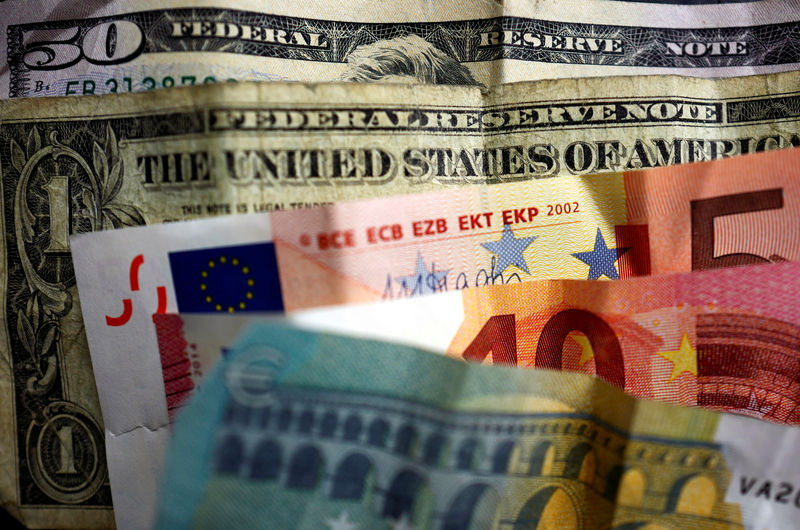By Peter Nurse
Investing.com - The dollar maintained overnight gains in early European trade Friday, while the euro struggled near four-week lows as new Covid-inpired lockdowns in Europe prompted the European Central Bank to hint at more monetary easing.
At 2:55 AM ET (0655 GMT), the Dollar Index, which tracks the greenback against a basket of six other currencies, was up less than 0.1% at 93.998, after climbing to a near four-week high during the previous session, largely on the back of the euro’s drop. EUR/USD fell 0.1% to 1.1669, GBP/USD fell 0.1% to 1.2913, while USD/JPY fell 0.2% to 104.41.
The ECB kept interest rates steady on Thursday, but acknowledged that the fallout from the second wave of coronavirus infections had damaged the economic outlook.
“The ECB sent strong signals that another easing package would be in store in December, as the economic outlook had darkened notably. The ECB’s stance leaves some more room for bond yields and EUR/USD to fall further,” said Nordea analyst Jan von Gerich, in a research note.
A further cut in interest rates seems in doubt, however, with Robert Holzmann, a member of the ECB's governing council, telling Bloomberg that there would be "little effectiveness" from lower interest rates.
Nordea is looking for an expansion of the ECB’s Pandemic Emergency Purchase Program of 500 billion euros and the announcement of more Targeted Longer-Term Refinancing Operations.
However, “given the recent developments in terms of weak inflation and more economic restrictions due to Covid-19, risks are tilted towards an even bigger easing package,” von Gerich added.
Attention will turn to the release of the euro zone’s third-quarter GDP release, with a rebound expected from the second quarter’s 11.8% decline. The U.S. equivalent rebounded at a 33.1% annualised rate last quarter, data showed on Thursday, and earlier Friday France's GDP release showed a rise of 18.2%.
A great deal of uncertainty remains ahead of next week’s U.S. presidential election and as the number of Covid-19 cases grows rapidly globally.
Elsewhere, USD/CNY dropped 0.2% to 6.6986, with the yuan set to post a positive month, the fifth in a row, helped by China seemingly recovering more quickly from the virus pandemic. Also helping Friday was a tightening of liquidity, which pushed the benchmark gauge of interbank borrowing costs to the highest since February.
